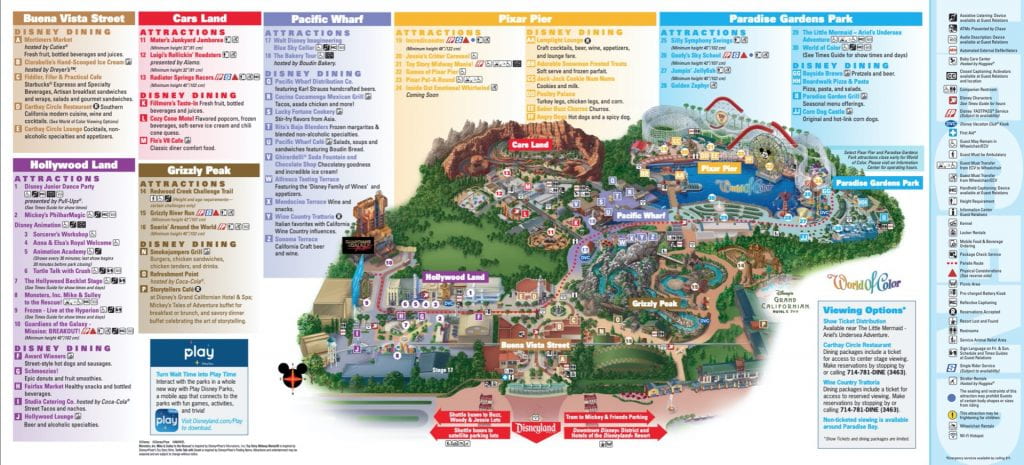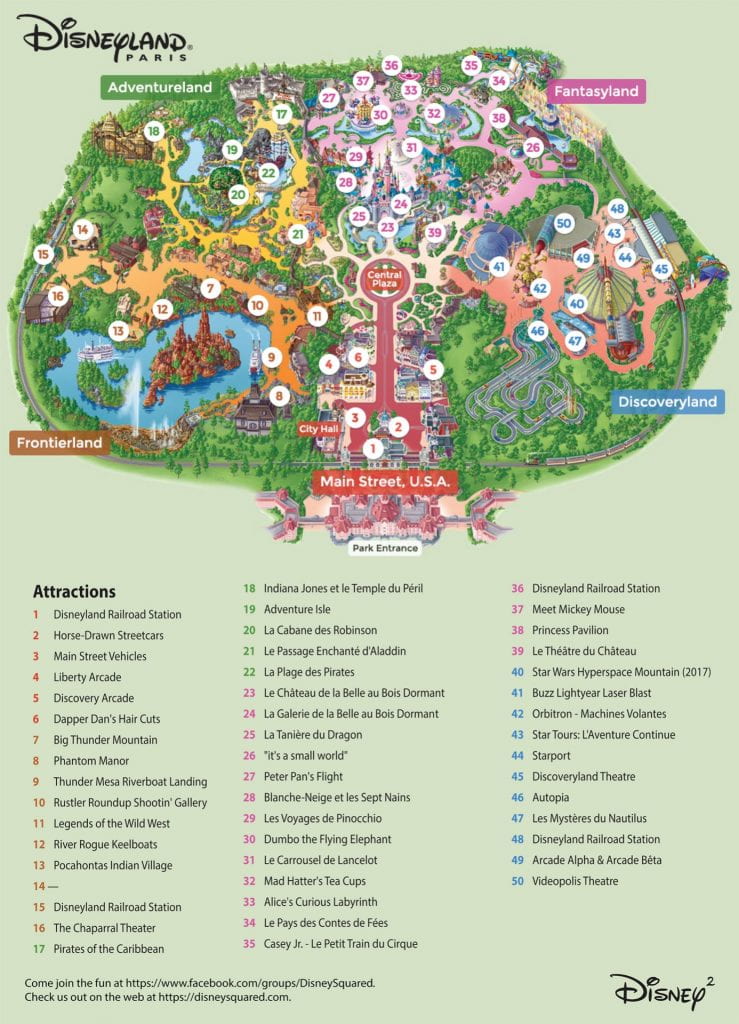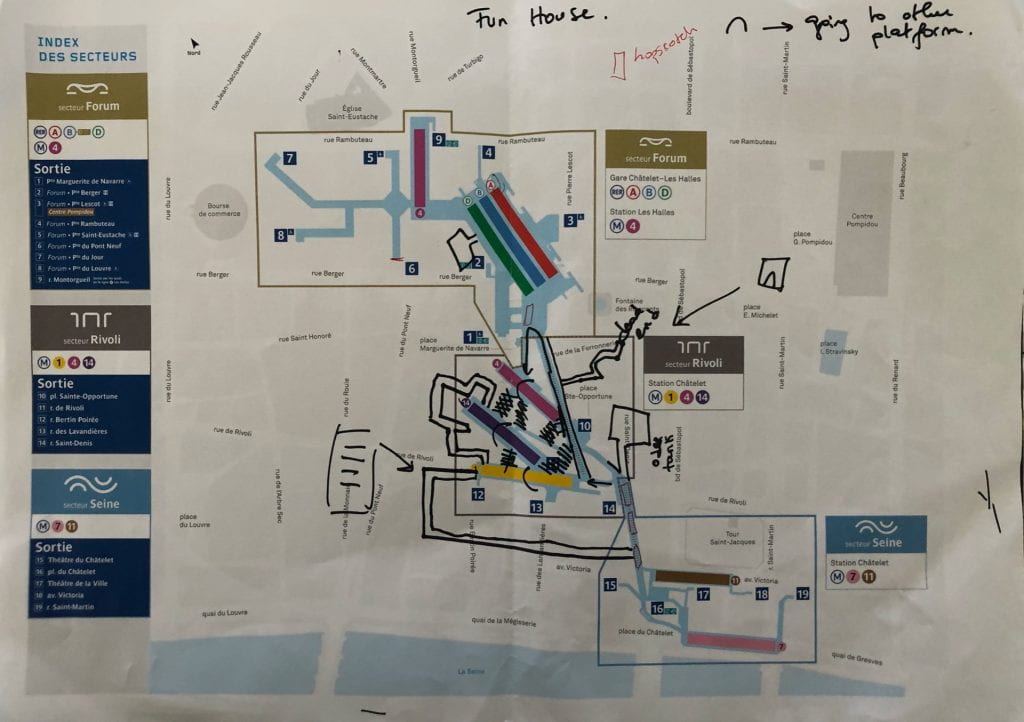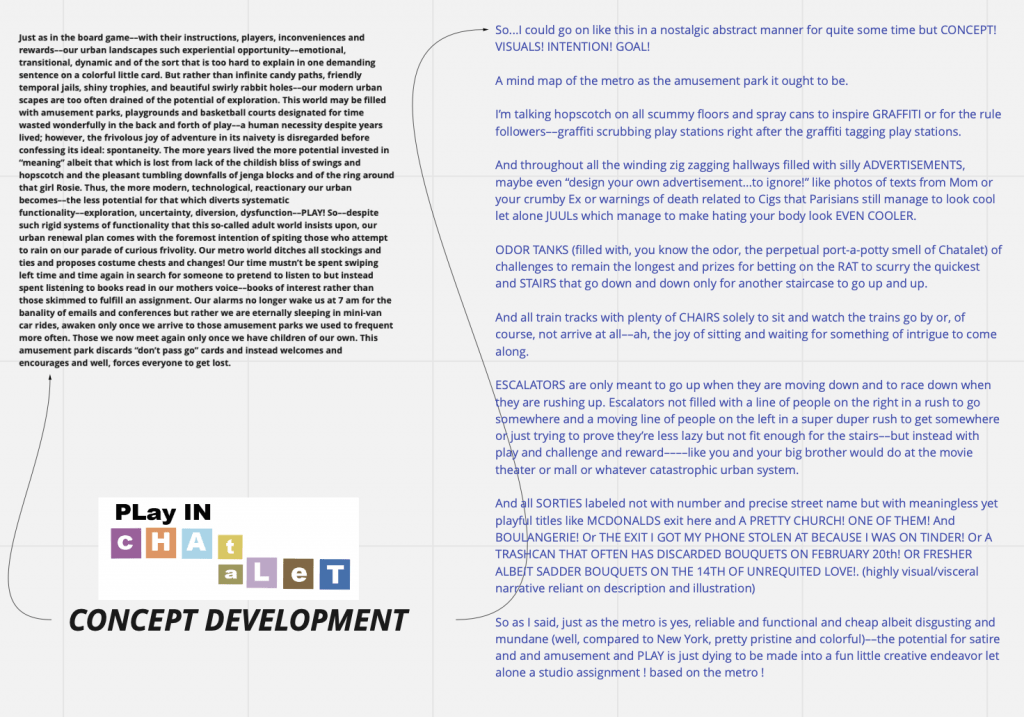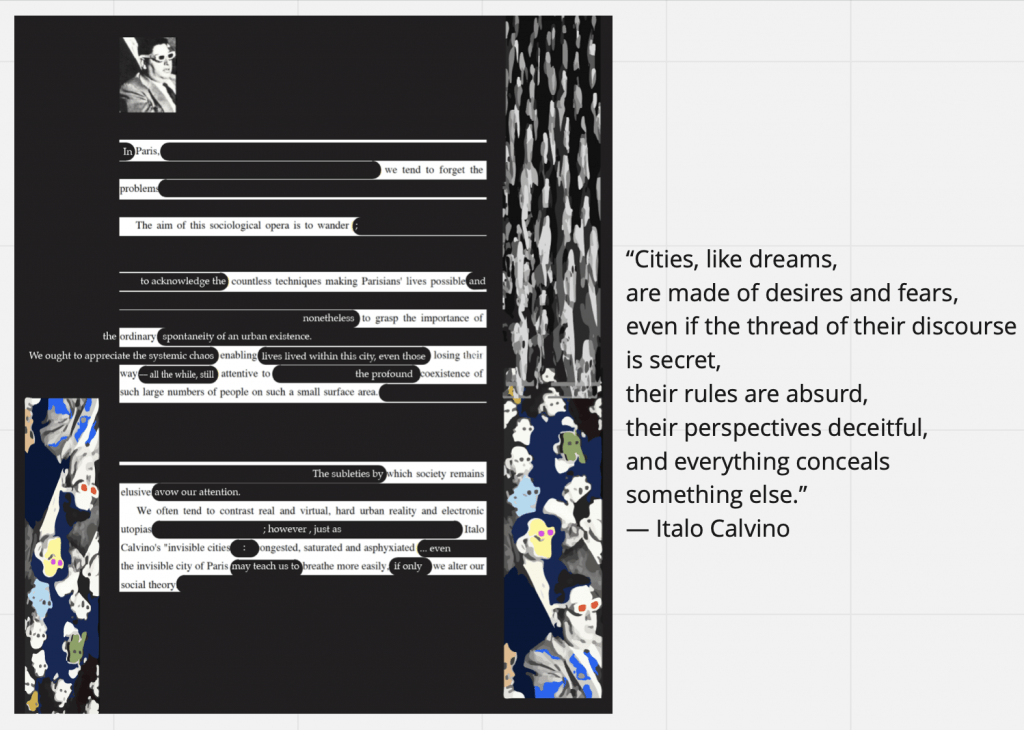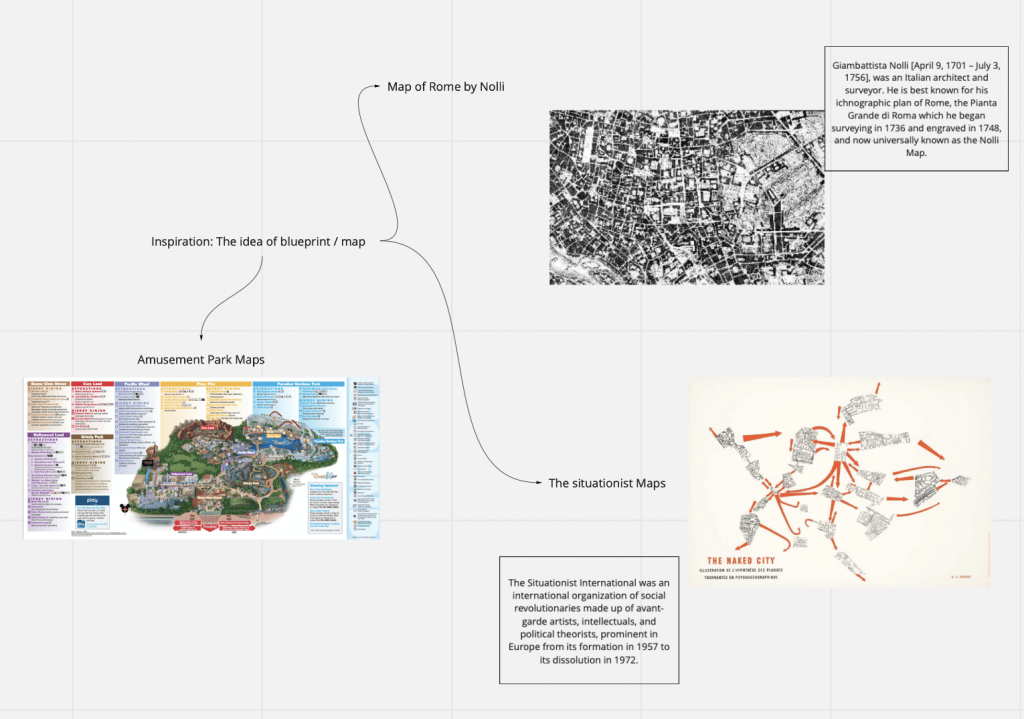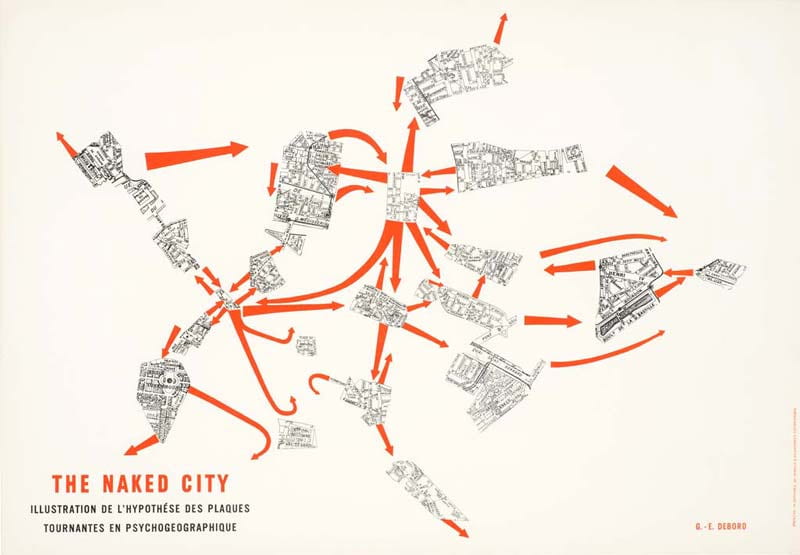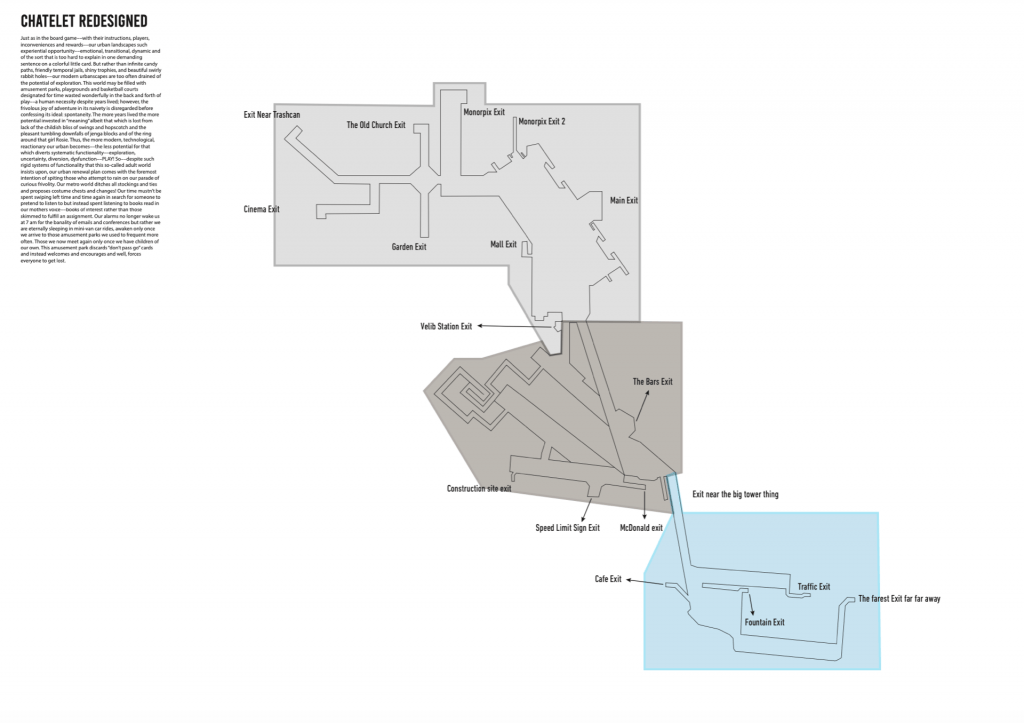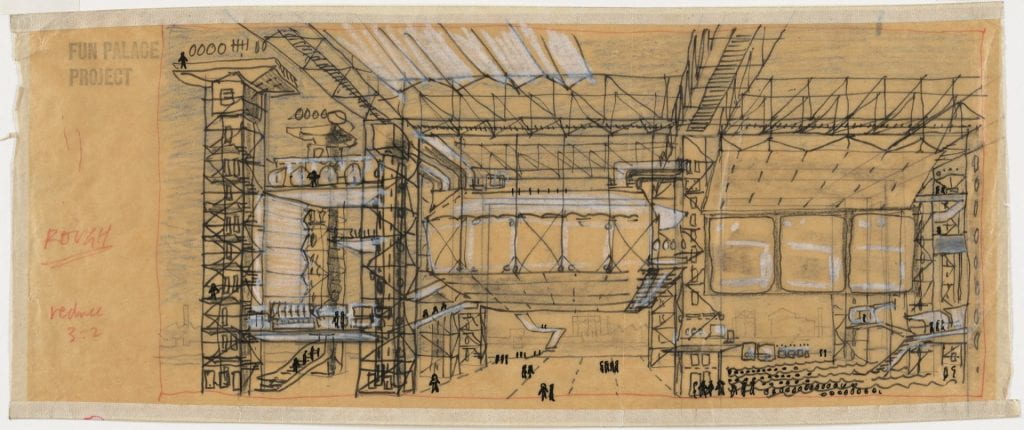— Working with Olivia Bonner
For project 1, we focused on the metro system of Paris, and this interconnectivity of different paths in the same place, that create this organised chaos. People go from point A to point B, but each have a different attribute, which creates this intertwinement.
The idea started with the initial idea I had about a building that would obstruct all different kinds of systems in the urban space and would be considered a rural building and space in the city. I am still keen on the idea and would like to develop it more.
Using a cardboard / wood cutout of a silhouette, we’re going to disturb the crowd by putting it in several general pathways in the metro station (Châtelet – Gare du Nord – Saint Lazare) [putting the cutout on the rails???]
To document the disruption, we’re going the film the installation (probably in time-lapse), and it would be considered the final work.
Olivia wants to make the video more chaotic, with different layers overlapping (more crazy and colourful, a bit like under LSD) but I don’t agree.We have different styles and I’m having a hard time finding a middle ground.
[It will also be accompanied by an analytic text (written by Olivia) that analyses the obstruction that occurs.]
Would it be considered a resistance? Going against the grain of the system? Or would people be unbothered.
— I’m still interested in the phenomenon of the urban space, and how if we take individually urban layers and divide them from one another, it no longer is an urban space.
This goal will be achieved if everyday practices, “ways of operating” or doing things, no longer appear as merely the obscure background of social activity, and if a body of theoretical questions, methods, categories, and perspectives, by penetrating this obscurity, make it possible to articulate them — Michel de Certeau, The Practice of Everyday Life
Statues Installation:
Installation proposal of statues of people walking in metal in the middle of hallways in the metro station
We finally decided on redesigning the Châtelet metro station in the style of a funhouse. Still on the topic of disruption of a system, we are creating a
“unfuctional” station. While the metro is used for fast commuting and for its fast and easy functionality, we are redesigning it in a nonfictional way.
So we are mainly inspired by amusement park of fun houses plans
forcing the participants into a unfunctinal situation.
– the element of surprise – irony – satire
We are adding elements and changing the structure of the station in our favour. The audience will not knowingly be put in into the game in entering the station, and playing by our rules.
Sketches
Initial brainstorming and planning of the “funhouse”
Miro
Inspo:
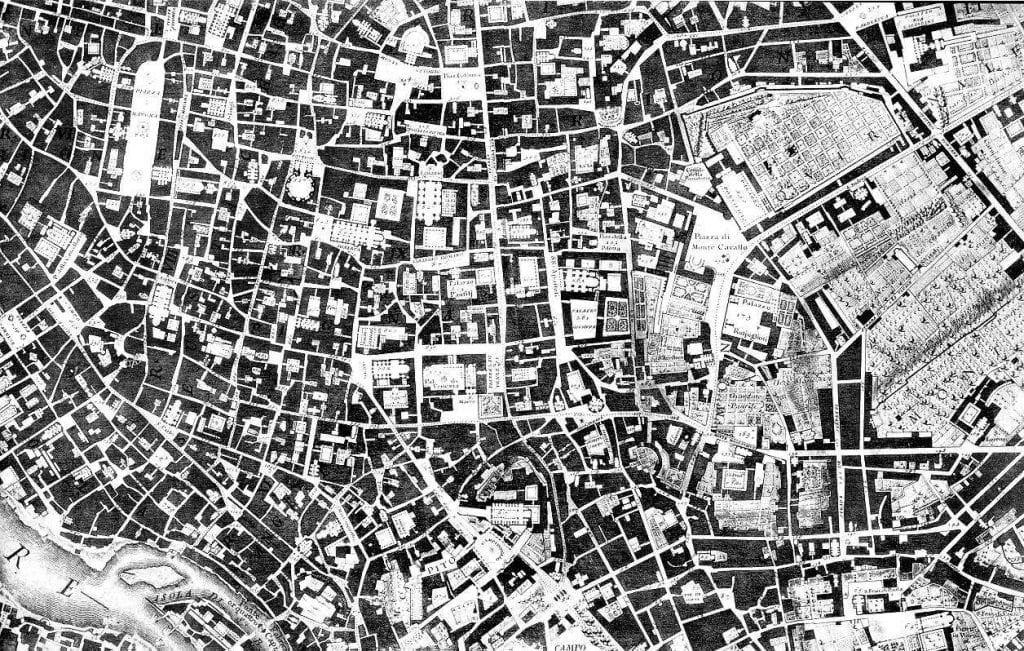 The Nolli map reflects Bufalini’s map of 1551, with which Nolli readily invited comparison, however Nolli made a number of important innovations. Firstly, Nolli reorients the city from east (which was conventional at the time) to magnetic north, reflecting Nolli’s reliance on the compass to get a bearing on the city’s topography. Secondly, though he follows Bufalini in using a figure-ground representation of built space with blocks and building shaded in a dark poché, Nolli represents enclosed public spaces such as the colonnades in St. Peter’s Square and the Pantheon as open civic spaces. Finally, the map was a significant improvement in accuracy, even noting the asymmetry of the Spanish Steps. The map was used in government planning for the city of Rome until the 1970s; it was used as a base map for all Roman mapping and planning up to that date.
The Nolli map reflects Bufalini’s map of 1551, with which Nolli readily invited comparison, however Nolli made a number of important innovations. Firstly, Nolli reorients the city from east (which was conventional at the time) to magnetic north, reflecting Nolli’s reliance on the compass to get a bearing on the city’s topography. Secondly, though he follows Bufalini in using a figure-ground representation of built space with blocks and building shaded in a dark poché, Nolli represents enclosed public spaces such as the colonnades in St. Peter’s Square and the Pantheon as open civic spaces. Finally, the map was a significant improvement in accuracy, even noting the asymmetry of the Spanish Steps. The map was used in government planning for the city of Rome until the 1970s; it was used as a base map for all Roman mapping and planning up to that date.
The map is framed with a vedute by Stefano Pozzi. A scaled-down edition, a collaboration between Nolli and Giovanni Battista Piranesi, was published in the same year the original map was finished. Piranesi was instrumental in getting the work printed; Giuseppe Vasi also contributed.
I really like the aesthetic of this work, I would love to find a way to incorporate it.
The intellectual foundations of the Situationist International were derived primarily from anti-authoritarian Marxism and the avant-garde art movementsof the early 20th century, particularly Dada and Surrealism.Overall, situationist theory represented an attempt to synthesize this diverse field of theoretical disciplines into a modern and comprehensive critique of mid-20th century advanced capitalism.
The work of the Situationist interests both Olivia and I, in the sense of the aesthetics again.
Initial changes of the map
I started with a simple base of the map, of blueprints of Chatelet.
And then based on my sketches, I created the connections between the entrances and the lines, and the activities you have to get through to get to the Line. (using Miro)
Idea development, and planning of activities in the station using Miro
After presentation:
still don’t feel like the project is done, and not satisfied with the aesthetic outcome.
Looked into The Fun Palace
Joan Littlewood and the architect Cedric Price came up with the idea of the Fun Palace as one building in 1961. It was their dream to build a space where people in the community could come together to celebrate arts, science and culture.
I really like this aesthetic of the work, and feel like it mirrors well my view of it.
